Key takeaways:
- Client feedback is essential for improving services and building trust through emotional connections.
- Effective feedback collection methods include post-service surveys, face-to-face interactions, and social media engagement.
- Analyzing feedback helps identify recurring themes and informs necessary changes to enhance customer experience.
- Personalized responses to client concerns can turn dissatisfaction into loyalty, fostering a deeper connection with customers.
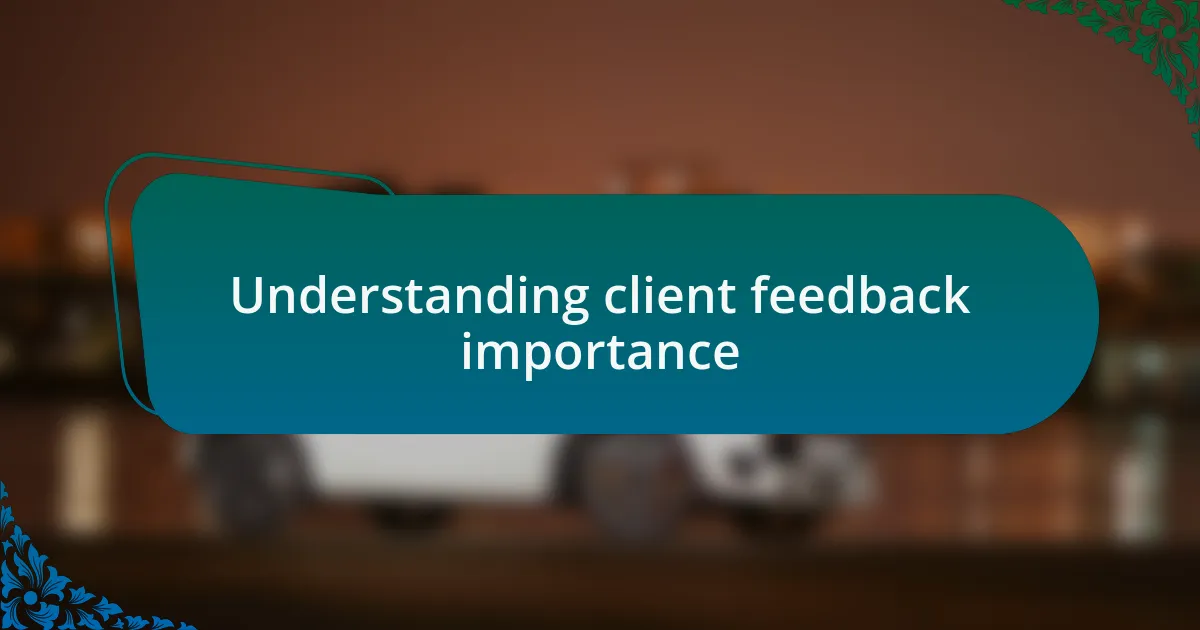
Understanding client feedback importance
Client feedback is a treasure trove of insights that can dramatically shape our services. I remember a time when a client pointed out an area where we could improve our drying process. That feedback was invaluable; it opened my eyes to a solution I hadn’t considered before, ultimately enhancing our service experience. Isn’t it fascinating how one piece of feedback can lead to significant changes?
Understanding feedback isn’t just about listening; it’s about connecting emotionally with our clients. When a customer shares their experience, they’re inviting us into their story. This connection can make all the difference, as it transforms a simple transaction into a relationship built on trust and transparency. How often do you find yourself reflecting on feedback to improve not only your services but also your client interactions?
Moreover, embracing client feedback allows us to adapt to their evolving expectations. I often think of it as a compass guiding us toward better service. When we pay attention to what our clients are saying, we can anticipate their needs and exceed their expectations. Isn’t that the ultimate goal of any service provider?
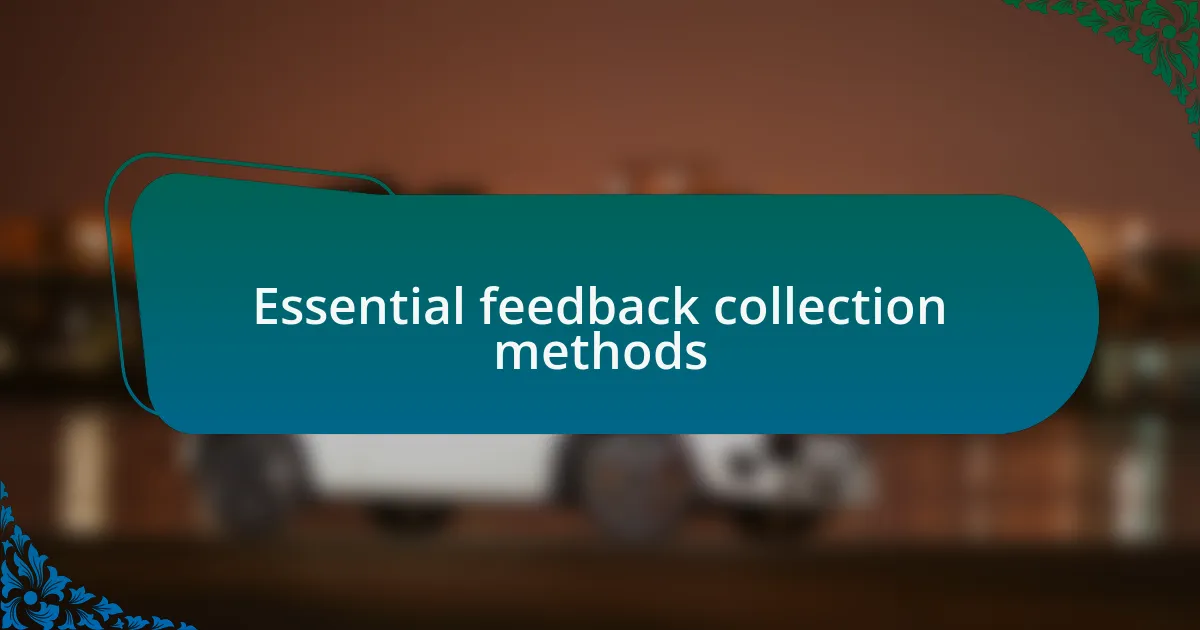
Essential feedback collection methods
One effective method I’ve found for collecting client feedback is through post-service surveys. After a car wash, I like to send a quick, user-friendly survey to clients via email or text. I remember one client, who typically left service reviews on social media, shared a handwritten note with me on how convenient the survey was. That simple gesture made the feedback process feel more personal for them, and it was a reminder that convenience matters in feedback collection.
Face-to-face interactions can also yield meaningful insights. When clients pick up their vehicles, I often take a moment to ask about their experience. One time, a loyal customer mentioned they hadn’t noticed a particular service I offered until they saw it advertised in the shop. This sparked an idea for better in-store signage that could inform new clients while reinforcing our commitment to quality service. How often do we miss opportunities simply because we don’t engage directly with our clients?
Social media platforms are another goldmine for gathering feedback. I regularly check our channels for comments and direct messages, and I engage with clients who take the time to share their thoughts online. Recently, a client tweeted about their experience, which not only boosted our visibility but also provided immediate feedback. It’s interesting how digitally engaging with customers can amplify their voices and help me understand broader trends in their expectations.
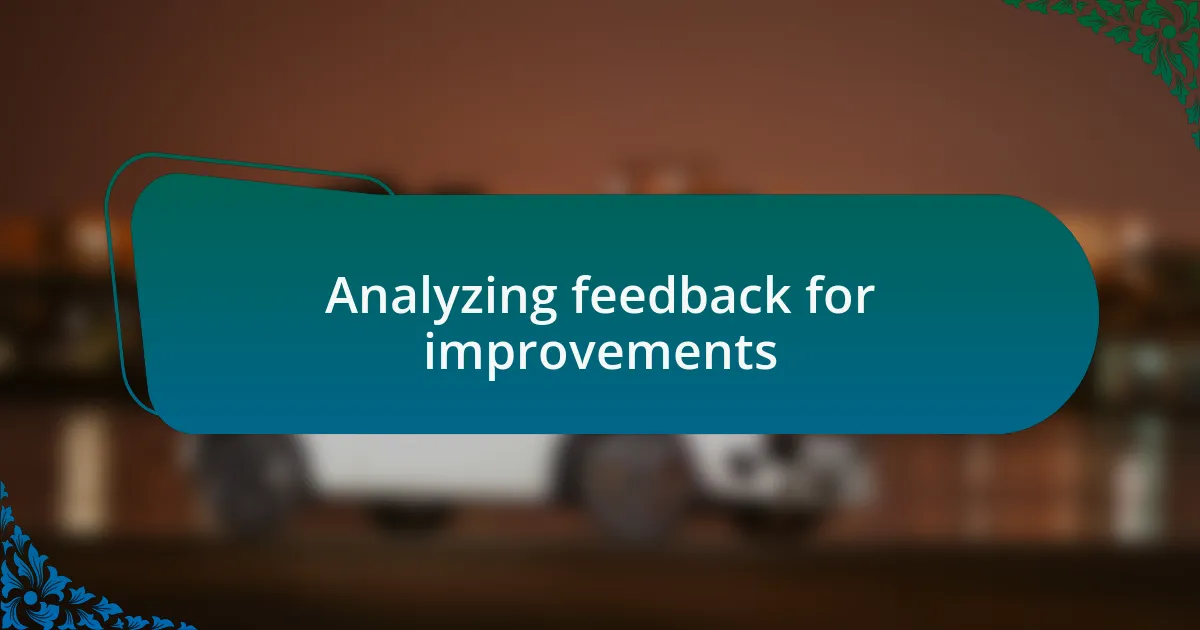
Analyzing feedback for improvements
Analyzing feedback is where the magic happens. I often find myself pouring over the insights from the surveys and client conversations, looking for recurring themes. For instance, last month, several customers noted they appreciated the eco-friendly products we use, but they also mentioned the drying time could be improved. This kind of specific feedback allowed me to adjust our processes, ensuring we enhance the service without sacrificing our environmental stance.
One day, after reviewing a set of feedback indicating dissatisfaction with our interior cleaning service, I realized that our staff might not have the right tools. This led me to invest in better equipment, which ultimately transformed the experience for our clients. The emotional response from customers seeing improvements firsthand is simply rewarding. It makes me wonder: how can we further enhance our offerings by simply listening more intently?
In another instance, I noticed a pattern where clients often asked about the benefits of our detailing services. This nudged me to create a dedicated section on our website explaining the value of each service. I think about how we frequently underestimate the power of clarity. Clear communication doesn’t just help our clients; it helps us understand their needs more deeply and fosters a more loyal customer base.
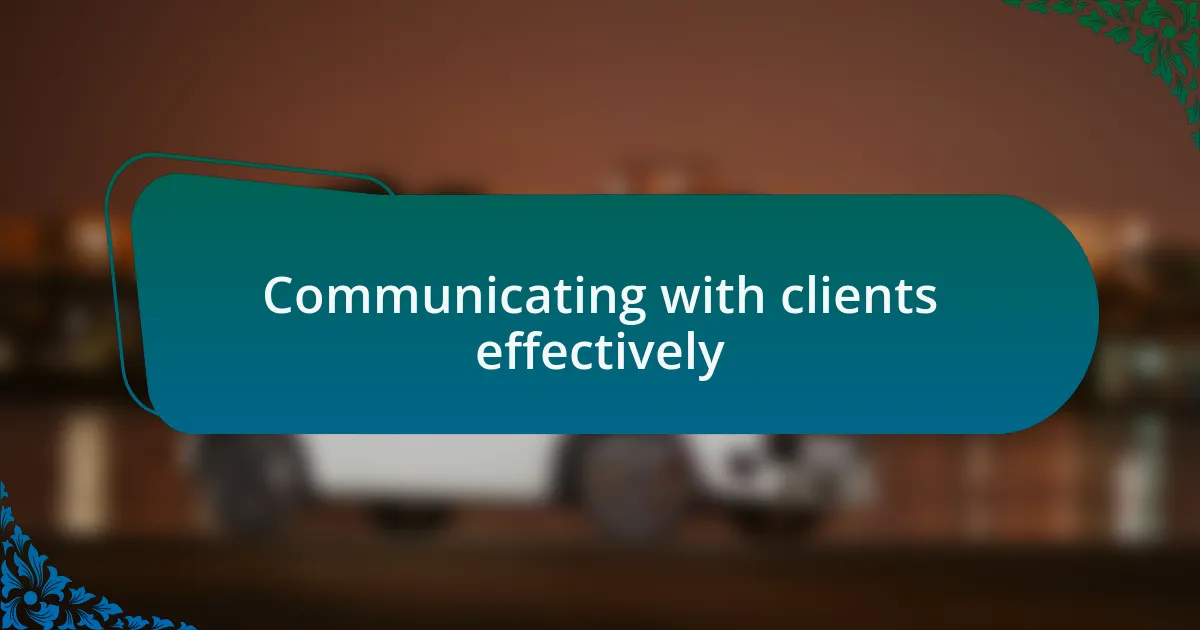
Communicating with clients effectively
When I communicate with clients, I make it a point to actively listen to their concerns. This isn’t just about hearing words; it’s about understanding the emotions behind those words. I recall a time when a customer shared their frustration about a missed appointment. Instead of offering a standard apology, I empathized with their situation and offered a complimentary service. This not only resolved the immediate issue but also helped build trust. Can you imagine how powerful a simple act of acknowledging their feelings can be?
I also believe in keeping the lines of communication open after the service is completed. After implementing changes based on client feedback, I often follow up with a quick call or email. Recently, I reached out to a client who had previously raised concerns about our pricing. I explained the changes we made, and their relief was palpable. It’s amazing how informative conversations can transform a client’s perception, turning doubts into loyalty.
Utilizing digital tools for communication has made a significant difference for me as well. I remember switching to an online feedback form that was user-friendly and visually appealing. The response rate increased dramatically! Engaging clients through various channels helps me gather a diverse range of feedback. Isn’t it incredible how adapting your communication methods can elevate your relationships with clients?
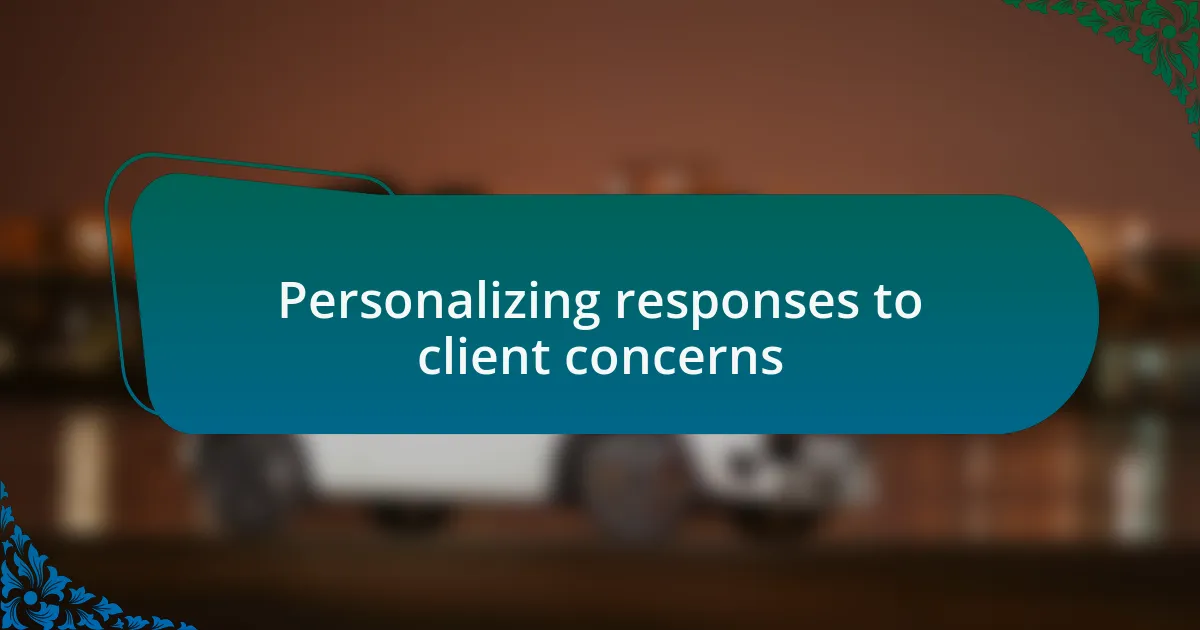
Personalizing responses to client concerns
When a client voices a concern, I make it a priority to personalize my response. For instance, I once received feedback from a long-time customer who felt our service had changed over time. Instead of sending a generic reply, I took a moment to reference her previous visits, recalling specific details that demonstrated I valued her loyalty. This approach not only made her feel heard but also transformed a moment of frustration into an opportunity for reconnection.
I often find that including a thoughtful note about their particular situation goes a long way. One customer mentioned a negative experience during a busy weekend. Rather than simply apologizing, I thanked them for their patience and explained how we were adjusting staffing levels during peak times. This acknowledgment made them feel like a part of our continuous improvement process. Have you ever noticed how such personal touches can turn a complaint into a catalyst for client loyalty?
Moreover, I sometimes share a little about my own journey to connect on a deeper level. For example, in responding to feedback about our wash options, I opened up about my own experiences as a car enthusiast. I expressed my understanding of wanting nothing but the best for their vehicles. This transparency not only personalizes my response but also builds a sense of community. Isn’t it fascinating how sharing personal insights can foster greater trust and rapport with clients?
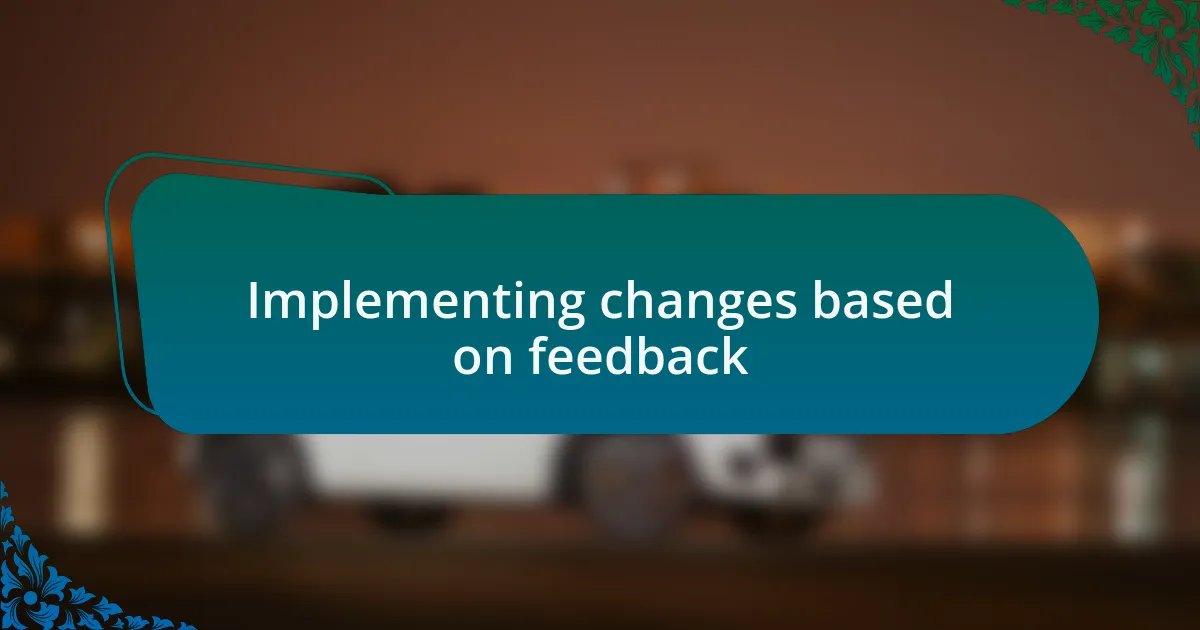
Implementing changes based on feedback
Implementing changes based on client feedback is a crucial step in refining services. For instance, after a few clients raised concerns about the efficiency of our drying process, I initiated a trial with a new drying technique. I kept the customers updated throughout and, after seeing positive results, their enthusiasm reassured me that I was on the right track.
I’ve also seen how collective feedback can inspire larger changes. One time, a series of comments about our eco-friendly products led me to research alternatives. I reached out to a local supplier to introduce more sustainable options. The excitement from clients when I announced this change was palpable, reinforcing the idea that their voices truly shape our offerings.
It’s interesting to consider how each piece of feedback can spark innovation. Last summer, I received suggestions regarding our loyalty program. I decided to revamp it entirely and included a referral reward based on my clients’ ideas. The improvements not only increased participation but also fostered a sense of ownership among clients—have you ever experienced that powerful feeling of being part of something bigger?